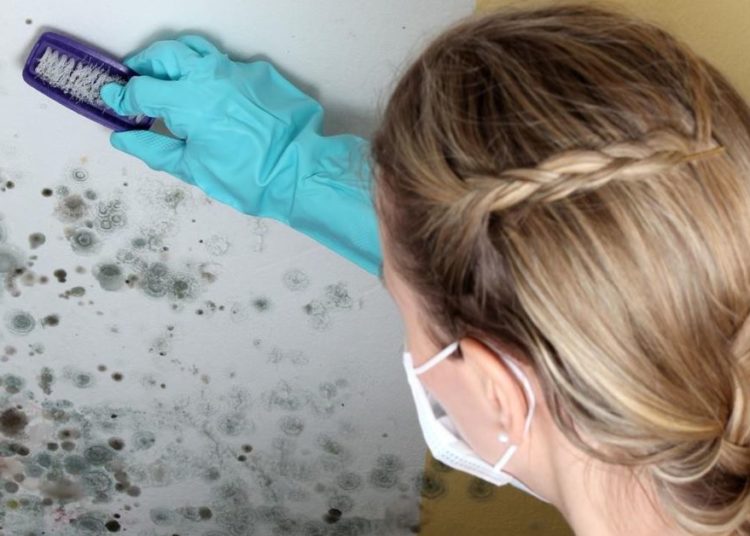3. Application and cleaning

Before you begin:
- Seal off the room from the rest of the house with the plastic and tape.
- Keep children and animals out of the work area during the cleaning procedure.
- Do not eat, drink, chew gum/tobacco or smoke at any time during cleaning.
- Use a dehumidifier prior to, during, and after the clean-up to keep areas dry and prevent mold from reoccurring.
Clean-Up:
-
- Spray and remove visible mold with general household cleaner solution. Start from the top and work down. Change towels frequently. Discard towels in plastic bag. Rinse the same area with clean water on a damp towel or lightly spray with warm rinse water in a spray bottle and wipe with a clean towel.
- Repeat the above step until all visible mold is gone. Note: There may be some discoloration of the surface from both the mold and the cleaning solution. Take care to avoid damaging the surface by cleaning too hard.
- If a bleach solution is to be used, wipe the affected area and let set for 15 minutes (for fungicides other than bleach, follow the manufacturer’s instructions). Rinse the area with a damp towel using clean warm water or by lightly spraying with warm rinse water in a spray bottle and wiping with a clean towel.
Once Complete:
- Once the surface is dry to the touch, HEPA Vacuum for at least 1 minute per square foot of affected area. Dead mold and spore bodies can still be highly allergenic to susceptible individuals, so thorough HEPA-vacuuming is necessary to remove all mold fragments.
- Place HEPA-vacuum bag into a garbage bag (follow manufacturers guidelines for using a HEPA-Vacuum).
- Tightly tie the garbage bag and dispose of it as you would your everyday household garbage.
- Flush wastewater down a toilet, utility sink, or floor drain.
- Change out of your cleaning clothes. Wash your hands and face.
- Wash your cleaning clothes separate from your family’s laundry.
- At this point, you can apply paint or other coating to the surface. You may wish to use a paint/coating that contains a mildewcide or fungicide to prevent future mold growth.
- Be sure to follow the manufacturer’s instructions and recommendations when using any mildew resistant paint or paint additive. Remember, these are also pesticides, and may have adverse health effects on some individuals.
If you have larger mold problems and you feel overwhelmed with the above instructions, you may want to consider contacting a mold contractor to complete the clean-up.
For more information on mold:
the Division of Public Health, Bureau of Environmental Health
Page 9 of 9
